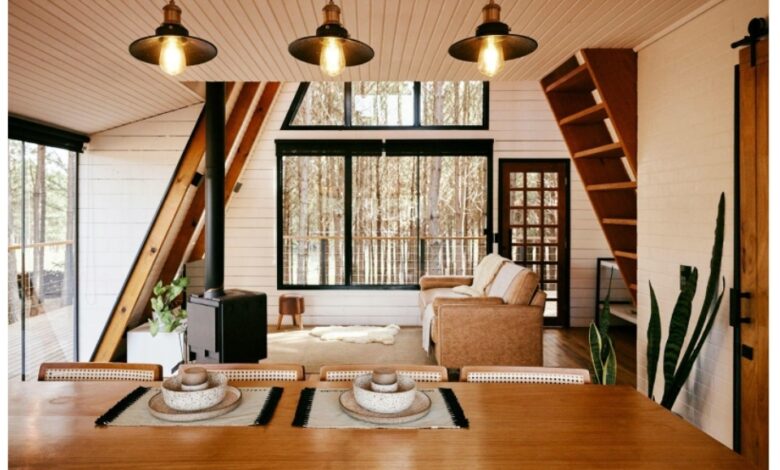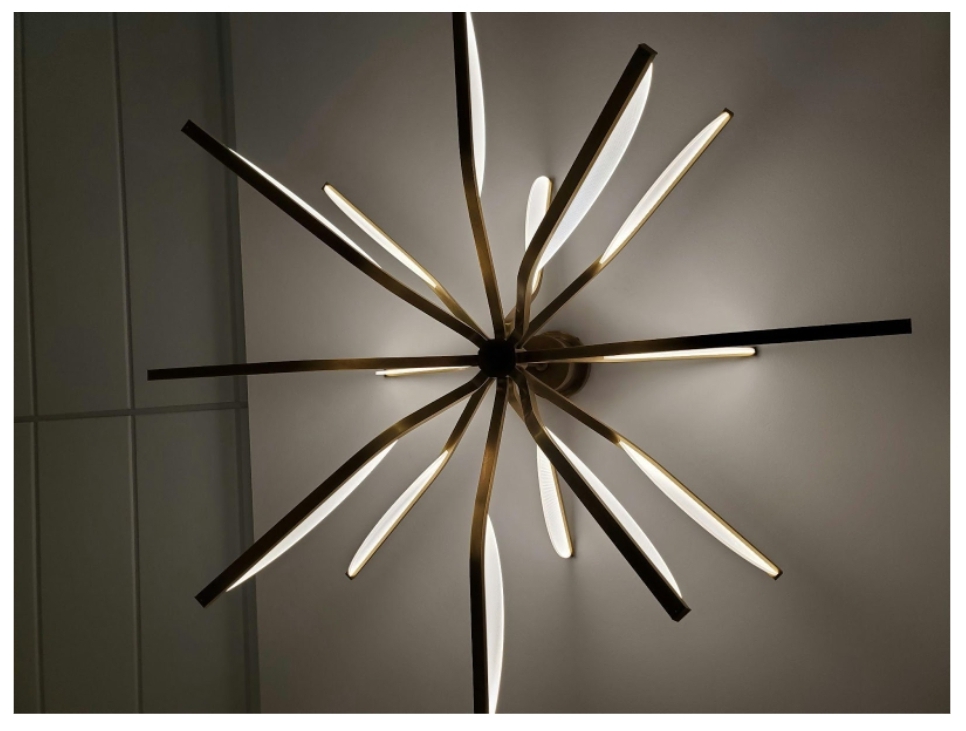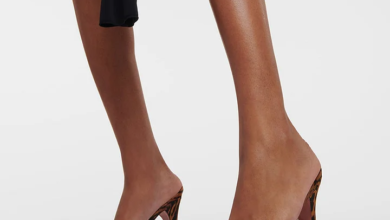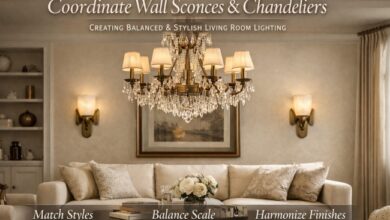Interior Design Staples That Never Go Out of Style

Interior design, like fashion, cycles through trends. One year it’s all about minimalism, the next it’s maximalist patterns and dopamine decor. But beyond the passing fads lies a dependable realm of design staples, elements that quietly endure, providing timeless appeal across decades and decor tastes.
There’s a reason we still admire certain shapes, materials, and silhouettes. They’re rooted in functionality, historical significance, and aesthetic balance. One great example is the enduring popularity of mid-century modern furniture, often accentuated with minimal, metal accents. Brands like The Hairpin Leg Company exemplify this intersection of form and function, crafting pieces that feel both vintage and utterly contemporary.
Whether you’re furnishing a brand-new flat or giving your space a seasonal refresh, these design staples offer a foundation that won’t go out of style anytime soon.
1. The Power of Neutrals
Neutral color palettes have long anchored interior design. They create calming environments, enhance natural light, and provide the perfect backdrop for more daring accents.
Think creamy whites, soft greys, beige, stone, and earthy tones. These hues work across styles, Scandinavian, farmhouse, modernist, and are easy to personalize with textures, plants, or seasonal accessories.
According to Better Homes & Gardens, using a neutral base in your home makes it easier to adapt your decor over time. If you ever want to pivot from rustic to industrial, or from traditional to Japandi, a neutral foundation keeps that transition seamless.
2. Natural Wood Finishes
Wood has been used in interior design for centuries, and for good reason. It brings warmth, texture, and an organic quality to interiors. From exposed ceiling beams to reclaimed coffee tables, wood always feels grounded.
Lighter tones like oak and ash suit minimalist, Scandinavian-inspired spaces. Meanwhile, deeper tones like walnut and mahogany feel luxurious and classic.
Don’t underestimate the impact of where you place wood, either. Wooden dining chairs, statement bedframes, or a bespoke entryway bench, all carry timeless appeal.
3. Metal Accents Done Right
A small touch of metal can modernize a space without overwhelming it. Brass, matte black, or brushed nickel elements on lighting fixtures, cabinetry hardware, or table legs add sophistication and contrast.
Hairpin legs, for instance, have been around since the 1940s and remain a go-to for designers and DIYers alike. Their slim profile and industrial roots make them an iconic choice that complements everything from rustic to modern.
This is where functional elegance comes into play. A basic table top becomes a statement piece when paired with sculptural legs from The Hairpin Leg Company. You’re not just assembling furniture, you’re shaping visual balance.
4. Quality Lighting Fixtures

Lighting is one of the most transformative tools in interior design. Yet many overlook its importance beyond mere function.
Statement lighting, whether a mid-century sputnik chandelier, vintage-inspired sconces, or a well-placed pendant, acts like jewelry for your space. It can anchor a room, add drama, and instantly modernize a dated corner.
Opt for fixtures in timeless materials: glass, brass, or matte metal. Avoid overly trendy shapes or colors unless they complement your core style.
5. Classic Silhouettes in Furniture
Some furniture shapes have stood the test of time due to their balanced proportions and ergonomic genius. Think:
- Chesterfield sofas
- Eames lounge chairs
- Tulip dining tables
- Windsor chairs
- Parsons-style desks
These pieces look just as chic in a 2025 apartment as they did in a 1960s loft. They blend into any setting and often act as conversation starters thanks to their design legacy.
If investing in originals feels daunting, many modern reimaginings offer similar lines with updated materials.
6. Multipurpose Pieces
Functionality never goes out of fashion. Especially in urban living or small-space homes, multipurpose furniture like ottomans with storage, convertible sofas, or modular shelving units have become must-haves.
But timeless doesn’t have to mean utilitarian. Look for pieces that combine practicality with clean design, sleek benches with hidden compartments or nesting tables with geometric flair.
A simple wooden bench with elegant steel legs, for example, can move from hallway to bedroom with ease. It evolves with your lifestyle.
7. Greenery and Indoor Plants
Plants have always been part of home life, whether as kitchen herbs or decorative potted greens. They add softness to interiors, improve air quality, and offer a living contrast to static materials like stone or metal.
A well-placed fiddle-leaf fig or cascading pothos instantly breathes life into neutral spaces. The resurgence of biophilic design, a principle focused on human connection to nature, has only reinforced their place as a timeless element in modern interiors.
Plus, planters themselves can be design features: terracotta for earthy homes, concrete for modern lofts, and painted ceramic for eclectic vibes.
8. Built-In Storage and Hidden Design
While open shelving had its trendy moment, well-integrated storage remains essential, and always stylish when done right.
Think built-in bookshelves, under-stair storage, or floating cabinets that blend with wall color. These solutions reduce visual clutter while maximizing utility, keeping your space clean and breathable.
Even custom furniture with hidden drawers or lift-top surfaces makes organization feel elegant rather than utilitarian.
Surrounding Text and Placement Instructions
For those who need to balance both storage and display, a multi-functional piece of furniture is an excellent solution. A stylish buffet is a perfect example, providing ample cabinet and drawer space for dining essentials or electronics while offering a long, flat surface to showcase artwork, lamps, or decorative items. This piece of furniture helps reduce clutter and adds an elegant design element to any dining or living area.
9. Natural Textiles
Fabrics in natural fibers, cotton, wool, linen, and leather, age beautifully and offer comfort that synthetics struggle to match.
Linen drapes, woven wool throws, or a classic leather club chair introduce texture and warmth. These materials aren’t just timeless; they often become more attractive with use, developing patinas and softness that synthetic materials can’t mimic.
Mixing these textiles adds layers of visual interest, especially when you stick to a neutral or earthy palette.
10. Open Space and Thoughtful Layouts
A room doesn’t need to be packed with furniture to feel complete. In fact, some of the most enduring design philosophies, like those seen in Japanese or Scandinavian aesthetics, prioritize openness, flow, and function.
Design around how you move through a space. Leave breathing room between furniture. Allow negative space on walls or floors. These empty zones invite calm and make the items you do choose feel more intentional.
Even if your home is compact, the illusion of openness can be created through mirrors, light color schemes, and furniture with slim profiles (again, a nod to the power of hairpin legs!).
While trends will continue to shift, ushering in new shapes, colors, and materials, certain design elements remain immune to the expiration date. These staples bring continuity, comfort, and beauty to our living spaces no matter the decade.
By focusing on quality materials, clean silhouettes, and functional aesthetics, you’re not just decorating. You’re creating a timeless story. And often, that story is told in the details: a pair of elegant table legs, a wooden bench, the way light pools on a neutral rug.
In a world driven by change, these design choices offer a kind of quiet resistance. They say: this space will evolve, but its soul will remain the same.



